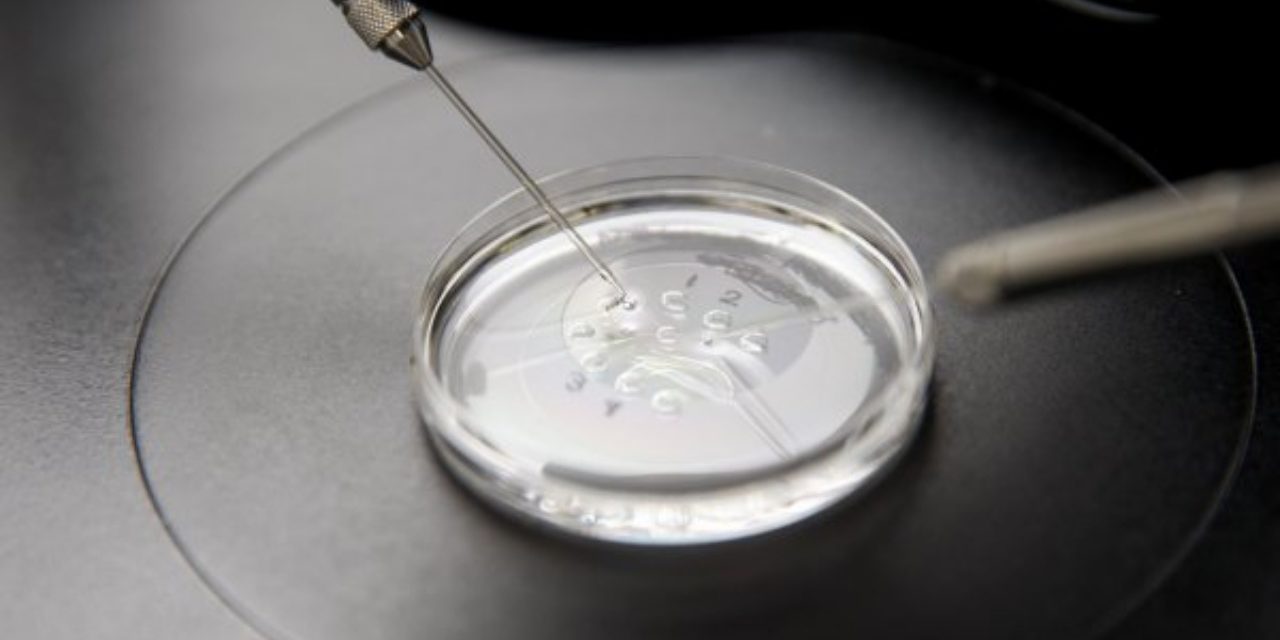Is the future of reproduction entirely artificial? That’s what some ethicists are arguing as scientists continue to make progress with in vitro gametogenesis (IVG), an assisted reproduction technology that would potentially allow physicians to make an egg and/or sperm from skin cells. If enacted, the technology would raise deep and concerning ethical and moral questions.
Debora Spar, author and a senior associate dean at Harvard Business School Online, detailed how this new technology would work and how it would change the process of making a family in a recent New York Times article.
Spar wrote, “Taken individually, each case of assisted reproduction is its own tiny marvel — a child born to parents who could not have otherwise conceived. Taken together, though, the impact is far wider and more profound. Because once we no longer need the traditional family structure to create children, our need for that traditional family is likely to fade as well.”
How is this possible? It’s through the process known as IVG, which involves taking stem cells and chemically coaxing them to become germ cells, the type which gives rise to gametes (sperm or eggs). These could then be used to produce an embryo in vitro. It would eventually be possible to get stem cells from skin cells that are chemically induced to become pluripotent stem cells (iPS cells), which could then be taken down the germ cell pathway.
This would allow individuals, couples and/or groups to create children. The combinations of how a child could be created are almost endless.
One legal-ethical review explained, “This technology would allow same-sex couples to have children who are biologically related to both of them; allow single individuals to procreate without the genetic contribution of another individual; and facilitate “multiplex” parenting, where groups of more than two individuals procreate together, producing children who are the genetic progeny of them all.”
At this point, the process has not made the jump to human application and testing, but early use with mice has provided results that indicate the process could also be used for humans.
The technology and its implications are frightening, for a multitude of reasons.
The most obvious, from a Christian perspective, is that the process undermines the family, the very foundation of society. From same-sex couples to a polyamorist group, a child could be created in a lab with any combination of individuals. There’s no foundation for the child, and what happens to the child if those complex relationships fracture?
As seen from a variety of cases involving surrogacy and egg/sperm donation, things become infinitely more complicated and relationships strained when three or more parties are involved.
The other problem is that it would allow scientists to create an incalculable number of eggs, sperm and, more importantly, embryos, potentially leaving millions of preborn children in a state of suspended animation.
Every year, couples that have gone through the in vitro fertilization process (IVF) usually end up having a couple or even dozens of left-over embryos that were not implanted. There are usually only three options available: either keep the embryos frozen indefinitely, donate the embryos, known as snowflake children, for adoption or donate the embryos to scientists for experimental purposes.
A third obvious problem is that it allows couples, individuals and/or groups to create a “designer baby,” one that is selected to fit the genetic criteria that the would-be parents might want to see in their children.
While it’s understandable that certain families would want to edit out deadly, inherited genetic diseases, like Huntington’s Chorea, it would also allow people to create a child that has particular characteristics that the parents want. Like being tall for basketball, good at math or having blonde hair and green eyes. Even if the process started out to address serious medical issues, it would move beyond that and quickly descend into the absurd.
And what happens if, despite all of the genetic manipulations, the child doesn’t turn out exactly how the parents want? How does that impact the family dynamic and the child’s self-esteem?
Perhaps, most disturbingly, some ethicists are claiming that this process will remove sex from procreation entirely and, instead, the whole process will be done in a lab. For couples with fertility issues, this is what can happen, but it shouldn’t be common or the go-to method of creating the miracle of life. It will undermine marriages and make sex a purely physical exercise, eliminating one the central functions for which it was originally intended – reproduction.
IVG has echoes of the recent CRISPR case, where a scientist edited the genetic sequence of preborn babies in China, without any oversight from the medical and scientific community. Concerns were immediately raised about the children born and their future, especially what this could mean for any future offspring that the children might have.
It’s estimated that IVG may become available for human application within the next fifty years.
Photo is from International Business Times






